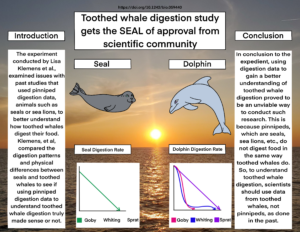A global study done on polar bears has shown that the decrease in polar ice cover due to climate change has been tied to increases in aggressive human-bear interactions.
Lead author of this research, James Wilder with the Marine Mammals Management sector of the U.S. Fish and Wildlife Service in Alaska, believes that polar bears get a bad rap.
“There isn’t a lot of incentive for them to be aggressive — unless times are bad. That seems to flip a switch. They seem to turn into a different beast.”
These bad times Wilder speaks of are times of reduced ice cover that are extending in recent years. Believed to be due to climate change, the decline of arctic sea ice has influenced polar bears to search for food on land – and closer to human communities.
Polar bears, top predators of the Arctic food chain, rely almost entirely on the ocean for food. Their diet is primarily made up of seals, and they are extremely dependent on the ice for shelter and resting from hunting.
Of the polar bear attacks on humans resulting in injury alone, 61% of the bears were categorized as having a body condition of below-average. In fatal attacks, 65% of bears were also considered as below-average in body condition. By far, the vast majority of the 73 reported polar bear attacks, both fatal and non-fatal, had a probable cause of predation on humans.
Because the bears reaching Arctic communities that border the sea are oftentimes underweight and searching for prey, it brings up the serious implications of human-wildlife interactions. Former deputy director of Russia’s Arctic National Park, Maria Gavrilo, seems to agree.
“Since bears are more hungry, and they’re actively looking, they smell food, and … they come up to human dwellings, and that leads to conflicts with people” Gavrilo stated in response to recent polar bear attacks in Northern Russia.
Wilder’s study did detail some effective tactics to surviving and avoiding potentially harmful polar bear interactions.
More than half of the 63 injury-only attacks had intervention by witnesses that ultimately saved the victims, therefore power in numbers may discourage bears from predating on humans.
In the 16 incidents where those involved had bear spray, none of them resulted in either party being injured or killed. Bear spray is also extremely effective with other species of bear, though in many countries this deterrent is illegal.
Many, if not all, of the interactions studied in this research also had wildlife attractants involved, including readily available trash bins, animal food, and hunting equipment/meat left outdoors. These items can draw a starving polar bear into a residential area.
For more information, check out the original scientific paper:
Wilder, J. M., Vongraven, D., Atwood, T., Hansen, B., Jessen, A., Kochnev, A., York, G., Vallender, R., Hedman, D. and Gibbons, M. (2017), Polar bear attacks on humans: Implications of a changing climate. Wildl. Soc. Bull., 41: 537–547. doi:10.1002/wsb.783




